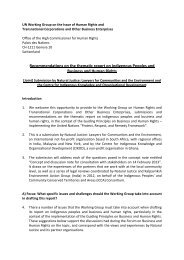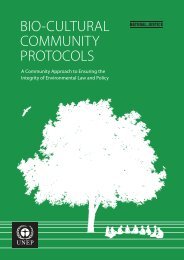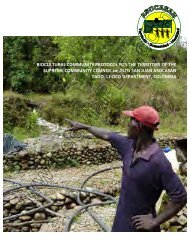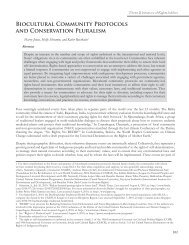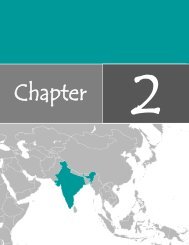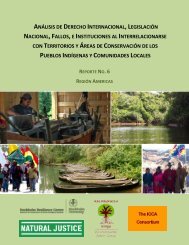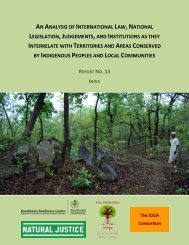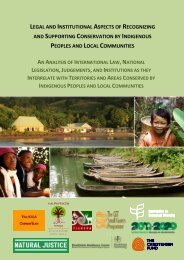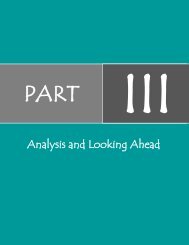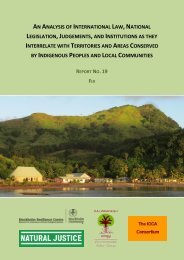Analyzing The Binding Nature of COP Decisions ... - Natural Justice
Analyzing The Binding Nature of COP Decisions ... - Natural Justice
Analyzing The Binding Nature of COP Decisions ... - Natural Justice
Create successful ePaper yourself
Turn your PDF publications into a flip-book with our unique Google optimized e-Paper software.
specified in that protocol … has been deposited.” Where a protocol has entered into force without the ratification <strong>of</strong> a particular Party, the protocol will enter into force for that Party once the Party “ratifies, accepts or approves that protocol or accedes thereto”. 30Amendment <strong>of</strong> the CBD or protocols thereto is governed by CBD Article 29. CBD Article 29(3) instructs the Parties to “make every effort” to reach agreement on proposed amendments to the CBD or any protocol by consensus. If consensus is not possible, as a last resort the Parties shall “be adopted by a two-‐third majority vote <strong>of</strong> the Parties to the instrument in question present and voting at the meeting, and shall be submitted by the Depositary[ 31 ] to all Parties for ratification, acceptance or approval.” 32 Parties then notify the Depositary <strong>of</strong> their acceptance <strong>of</strong> the amendment. Amendments only enter into force with regard to a particular Party if that Party has accepted enforcement. 33Adoption and amendment <strong>of</strong> annexes to the CBD or any protocol is governed by CBD Article 30. 34 Annexes are to be proposed and adopted pursuant to the procedure set forth in Article 29. However, any Party that is unable to approve an annex must notify the Depositary within one year from the date that it is notified <strong>of</strong> the annex’s adoption. 35 If such notification is not provided within the prescribed time frame, “the annex shall enter into force for all Parties to this Convention or to any protocol concerned”. 36 Amendments to annexes follow the same procedure as proposal, adoption and entry into force <strong>of</strong> annexes. 37As these provisions demonstrate, different rules apply to different <strong>COP</strong> actions under the <strong>COP</strong>. For example, the minimum number <strong>of</strong> Parties required for a protocol to enter into force is set forth in the protocol itself, and conceivably could consist <strong>of</strong> only two parties. However, the protocol only enters into force for those Parties that have agreed to be bound by it. With regard to amendments to the CBD or protocols, Parties must first seek to reach agreement by consensus. If consensus is not possible, amendments can be adopted by a 30 CBD Article 36(4). 31 <strong>The</strong> Depositary is the Secretary General <strong>of</strong> the United Nations. CBD Article 41. 32 CBD Article 29(3). 33 CBD Article 29(4). 34 “[A]nnexes shall be restricted to procedural, scientific, technical and administrative matters.” CBD Article 30(1). 35 CBD Article 30(2)(b). 36 CBD Article 30(2)(c). 37 CBD Article 30(3).



